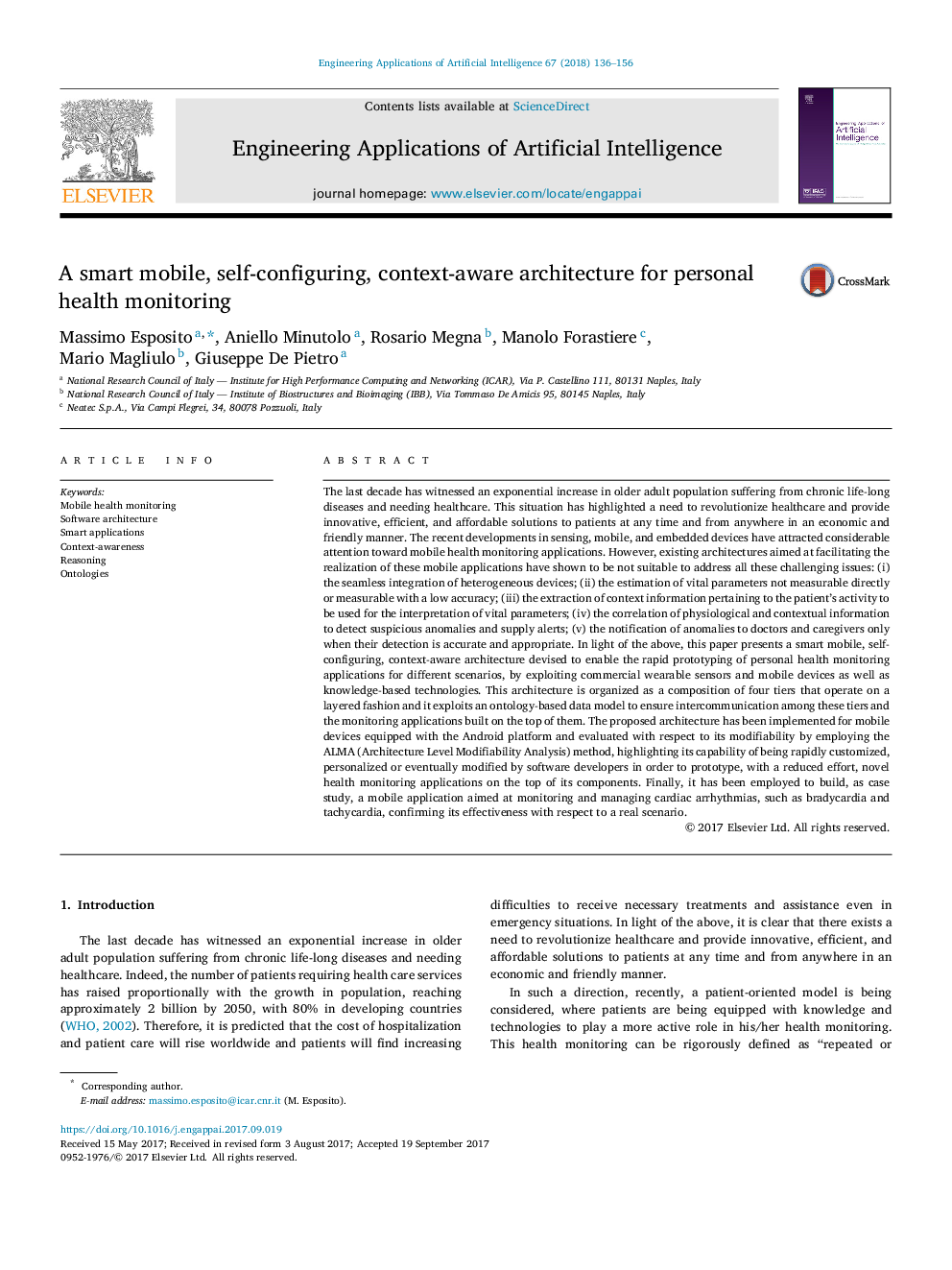| Article ID | Journal | Published Year | Pages | File Type |
|---|---|---|---|---|
| 4942574 | Engineering Applications of Artificial Intelligence | 2018 | 21 Pages |
The last decade has witnessed an exponential increase in older adult population suffering from chronic life-long diseases and needing healthcare. This situation has highlighted a need to revolutionize healthcare and provide innovative, efficient, and affordable solutions to patients at any time and from anywhere in an economic and friendly manner. The recent developments in sensing, mobile, and embedded devices have attracted considerable attention toward mobile health monitoring applications. However, existing architectures aimed at facilitating the realization of these mobile applications have shown to be not suitable to address all these challenging issues: (i) the seamless integration of heterogeneous devices; (ii) the estimation of vital parameters not measurable directly or measurable with a low accuracy; (iii) the extraction of context information pertaining to the patient's activity to be used for the interpretation of vital parameters; (iv) the correlation of physiological and contextual information to detect suspicious anomalies and supply alerts; (v) the notification of anomalies to doctors and caregivers only when their detection is accurate and appropriate. In light of the above, this paper presents a smart mobile, self-configuring, context-aware architecture devised to enable the rapid prototyping of personal health monitoring applications for different scenarios, by exploiting commercial wearable sensors and mobile devices as well as knowledge-based technologies. This architecture is organized as a composition of four tiers that operate on a layered fashion and it exploits an ontology-based data model to ensure intercommunication among these tiers and the monitoring applications built on the top of them. The proposed architecture has been implemented for mobile devices equipped with the Android platform and evaluated with respect to its modifiability by employing the ALMA (Architecture Level Modifiability Analysis) method, highlighting its capability of being rapidly customized, personalized or eventually modified by software developers in order to prototype, with a reduced effort, novel health monitoring applications on the top of its components. Finally, it has been employed to build, as case study, a mobile application aimed at monitoring and managing cardiac arrhythmias, such as bradycardia and tachycardia, confirming its effectiveness with respect to a real scenario.
